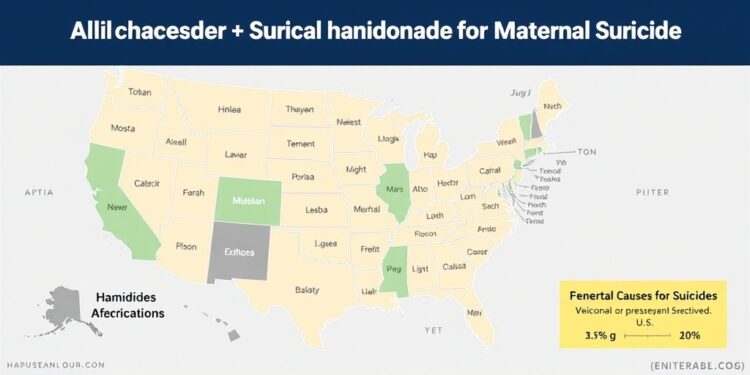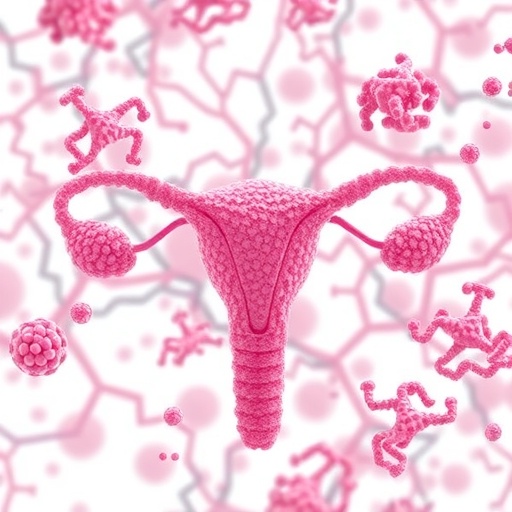
In a groundbreaking revelation that could reshape the narrative surrounding maternal health, new research presented at the Society for Maternal-Fetal Medicine’s annual meeting highlights that homicide and suicide have overtaken traditional medical causes as the leading contributors to maternal mortality in the United States. This alarming trend poses significant implications for healthcare providers, policymakers, and society as a whole, as awareness of violence during pregnancy and postpartum becomes ever more critical.
The study, which is the most comprehensive examination of national maternal death data to date, analyzed findings from the Centers for Disease Control and Prevention (CDC) spanning from 2005 to 2022. The analysis encompassed the fatalities of pregnant individuals and those within the first 42 days after childbirth, revealing that a staggering 20,421 pregnant individuals lost their lives during the 18-year period under study. Alarmingly, 11 percent of these deaths, accounting for 2,293 fatalities, were ascribed to homicide and suicide—showcasing a need for urgent public health attention.
Further disaggregating this data uncovers a disturbing reality; of the violent deaths accounted, 1,407 were due to homicide, while 886 were attributed to suicide. The study elucidated that firearms played a critical role in these fatalities. Specifically, 55 percent of the violent deaths, translating to 1,261 instances, involved a firearm. These findings provide compelling evidence that the issue of violence against pregnant individuals is not just relevant but necessitates a reevaluation of existing maternal health metrics and definitions.
Dr. Hooman Azad, the lead author of the study, expressed disbelief at the lack of recognition regarding violence as a leading cause of maternal mortality. He argued that the current definition of maternal mortality, which traditionally excludes homicide, fails to accurately reflect the heightened risk that pregnancy poses in relation to violence. This oversight not only obscures the true challenges faced during this vulnerable period but also detracts from the necessary discourse needed to address these preventable tragedies.
The racial dimensions of this issue also emerge startlingly from the data. The research indicates that Black birthing individuals, particularly those aged 18 to 24, face an astonishing homicide death rate of almost eight per 100,000, nearly quadrupling the national average. This alarming statistic underscores the intersections between race, access to care, and the broader social determinants of health, calling for introspective examination and corrective measures to ensure equitable health outcomes for all pregnant individuals.
In addition to revealing the disturbing trends in maternal mortality, the research also sought to analyze the impact of firearm legislation on these fatalities. The researchers found that states with enacted firearm laws saw between a 20 to 30 percent reduction in both firearm-related deaths and firearm homicides among pregnant individuals. This finding bolsters the argument for stronger regulatory measures around firearms as a means of safeguarding vulnerable populations, particularly during pregnancy when individuals are acutely susceptible to violence.
Dr. Mary D’Alton, a co-author of the study and a maternal-fetal medicine specialist, emphasized the misconception that most maternal deaths occur within healthcare facilities. Instead, she pointed out that a significant portion of these tragedies unfolds in domestic or community settings, making the need for public education and awareness initiatives all the more essential. By creating a societal dialogue around this issue, healthcare professionals and policymakers can pave the way for actionable strategies to mitigate these risks.
The implications of this research extend beyond the confines of individual cases; they prompt broader reflections on maternal health policies and the responsibility of society to ensure that pregnant individuals do not face violence or fear during one of the most profound periods of their lives. Fostering a collaborative approach that involves healthcare providers, legislators, and community organizations could create a more robust framework aimed at preventing maternal deaths rooted in violence.
As the discourse surrounding maternal health evolves, this research becomes a clarion call for reexamining how we define and address maternal mortality. By recognizing that homicide and suicide are significant contributors to maternal deaths, the medical community can pivot its focus from solely medical conditions to encompass the multidimensional challenges facing pregnant individuals. Only through such a holistic approach can we hope to reduce these preventable deaths and enhance the well-being of mothers and infants alike.
This study, to be published in the January 2025 issue of the open-access journal Pregnancy, serves as a pivotal moment for the Society for Maternal-Fetal Medicine and maternal health advocates. It encourages a much-needed dialogue on redefining maternal mortality definitions while pressing for policy changes aimed at protecting vulnerable populations from violence.
In conclusion, as we unpack these shocking statistics and acknowledge the multifaceted nature of maternal fatalities in the United States, the importance of legislative action, community engagement, and heightened awareness can no longer be understated. As healthcare professionals and advocates, the responsibility rests upon us to advocate for comprehensive maternal health policies that adequately address all facets of maternal mortality, including the violence that threatens the lives of pregnant individuals.
Subject of Research: Homicide and suicide as leading causes of maternal mortality
Article Title: Homicide and Suicide: Unrecognized Leading Causes of Maternal Death
News Publication Date: January 30, 2025
Web References: SMFM
References: CDC data analysis, Society for Maternal-Fetal Medicine annual meeting findings
Image Credits: None
Keywords: Maternal mortality, homicide, suicide, firearm legislation, public health, maternal health, pregnancy, violence, racial disparities, healthcare policy.
Tags: CDC maternal death datafirearms and maternal fatalitieshomicide and suicide in pregnancymaternal health awareness programsmaternal health policy implicationsmaternal mortality causesmaternal-fetal medicine conferencenational maternal health studyPostpartum Mental Healthprevalence of maternal violenceurgent public health issuesviolence during pregnancy





